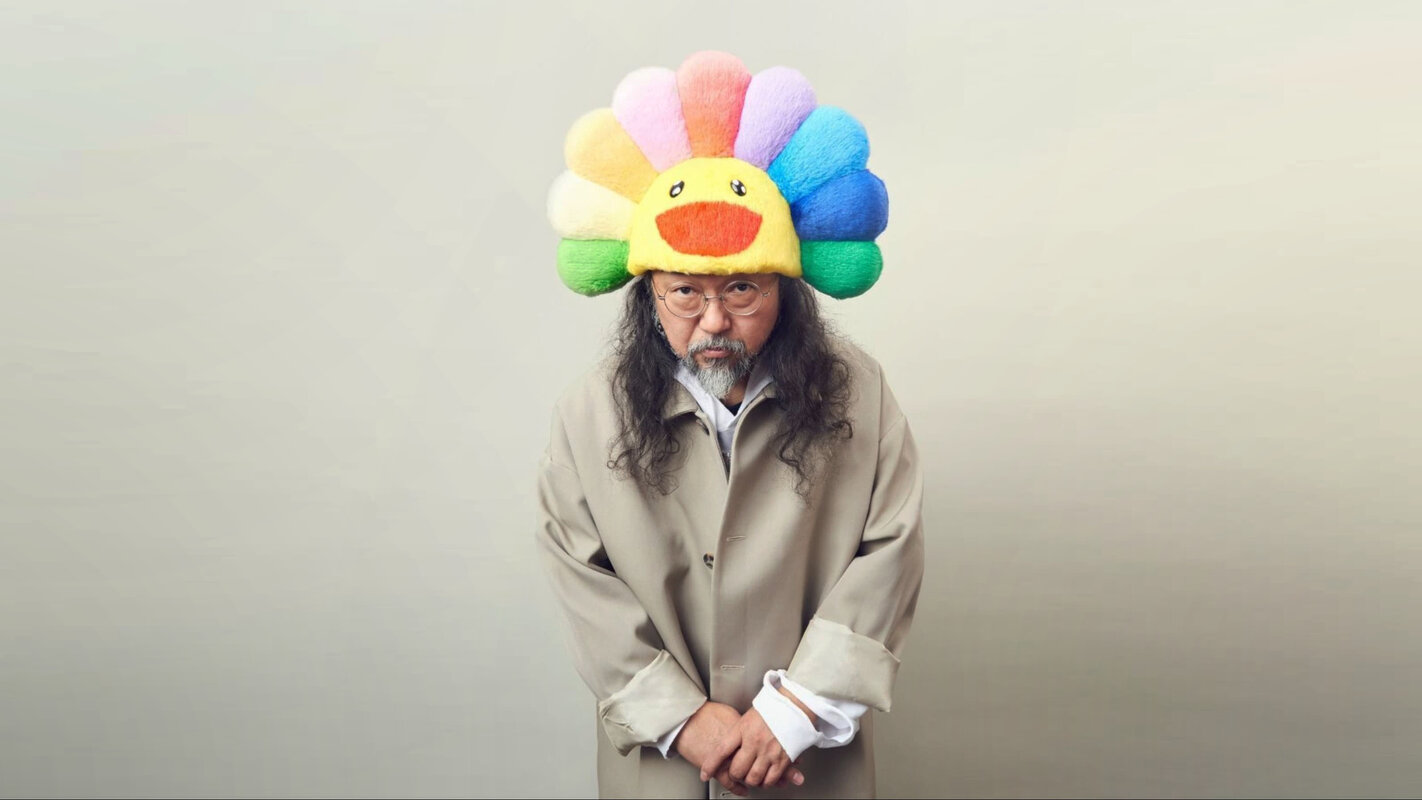
Takashi Murakami: About Japanese Character Culture
Takashi Murakami is one of the most visible and important Japanese artists working today, known for disseminating and promoting pop art strategies in ways unforeseen by Western critics and artists. Unifying many strands of culture that are frequently considered in opposition—traditional Japanese painting with Western influences, the realm of fine art with otaku lifestyle (juvenile culture obsessed with toys, anime, and video games), and commercial retail spaces with museums and other public venues—Murakami’s work is recognized for its ambition, polish, and fine execution.
Japanese people are confounded to see that modern Japan has come so far as to have a system involving characters and realize that these characters have become a real "culture" rooted in the Japanese heart.
There is a theory that the Japanese characteristic of "communication weakness " between people is one of the reasons for the acceleration of character culture in post-war Japan, especially since the 1990's. In modern Japan efforts to communicate with closely exchanged opinions is not emphasized in reality. This root goes back to the way Japanese culture got established after its defeat in the Pacific War. In other words, under the mechanism where the top of every hierarchy was established outside of the Japanese sphere it became difficult for the Japanese to create their own hierarchy. For example in human relationships, in order to understand the personality it is more popular to character-type them as the perky main character, the prefect-like accommodating girlfriend character, the twisted character, the chubby character, the doctor (smart) character, the picked-on character, and so on, rather than having a strict top to bottom hierarchy system. A perfect example of this can be found in the character setting of the game and animation, "Pocket Monster." Although there are over three hundred types of elaborately defined character personalities, even within that huge variety, the hierarchy structure with an absolute top to bottom axis is very weak. On the contrary, even the weak characters hold a trump card giving them the potential for a one-shot reversal of fortune. In some ways one completed form of the worldview that the post-war Japanese have reached is reflected here. At the same time because Japan is a "polytheistic" rather than "monotheistic" country there originally might have been a cultural background allowing for the large variety mentioned above.
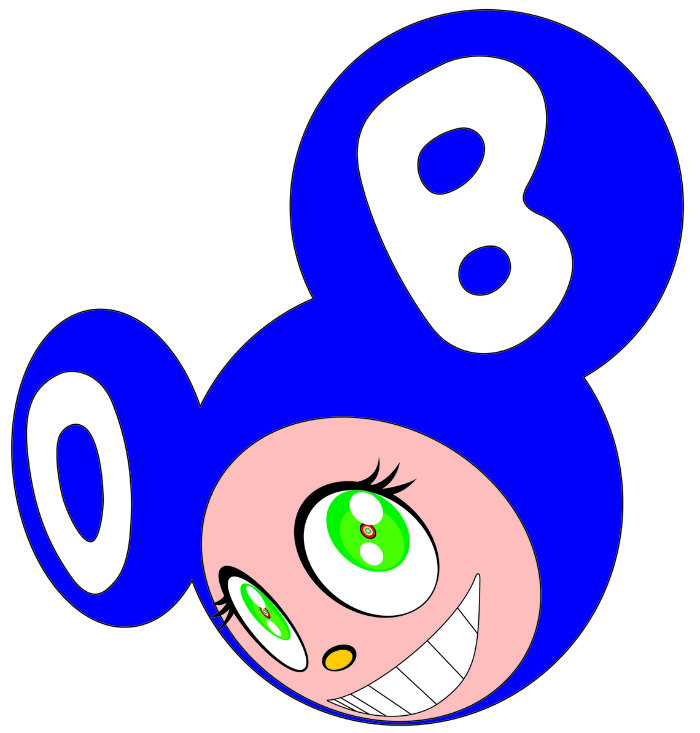
Let me explain the history of post-war "on-site" which created such a historical structure. Japan's animation and character cultures are closely entwined. Even now, animation projects are produced one after another and tied up with toy companies that develop products. Ranging from traditional toys and elaborately duplicated plastic models to card games and computer games; these products have advanced as "promotion media" to get across the quality of character images and toys themselves. This originates in America. In the process of how Japanese character culture has advanced this far is the saturation of post war American animation and importing countless numbers of corporation identities and characters that emerged in every kind of product advertisements such as food products as American consumer society.
The post-war Japanese adored novelty goods and merchandise promotion designs imported from victorious America as a "dream from overseas" and they quickly penetrated into the culture. With this influence, Japan's own advertising characters sprouted like mushrooms. Currently existing characters such as the Fujiya pastry company's "PEKO-chan" and Marukome Miso's "MARUKOME-kun" were born in 1950, five years after the end of the war. Furthermore corporate icons for companies such as Matsushita Electric Industrial's (National/Panasonic) "National Kid" and Toshiba Electric Industries' "Kousoku Esper" were made into live-action for children's television shows. Through translating imported character culture, Japanese started linking with a media who pushed new developments. This main media was indeed television animation.
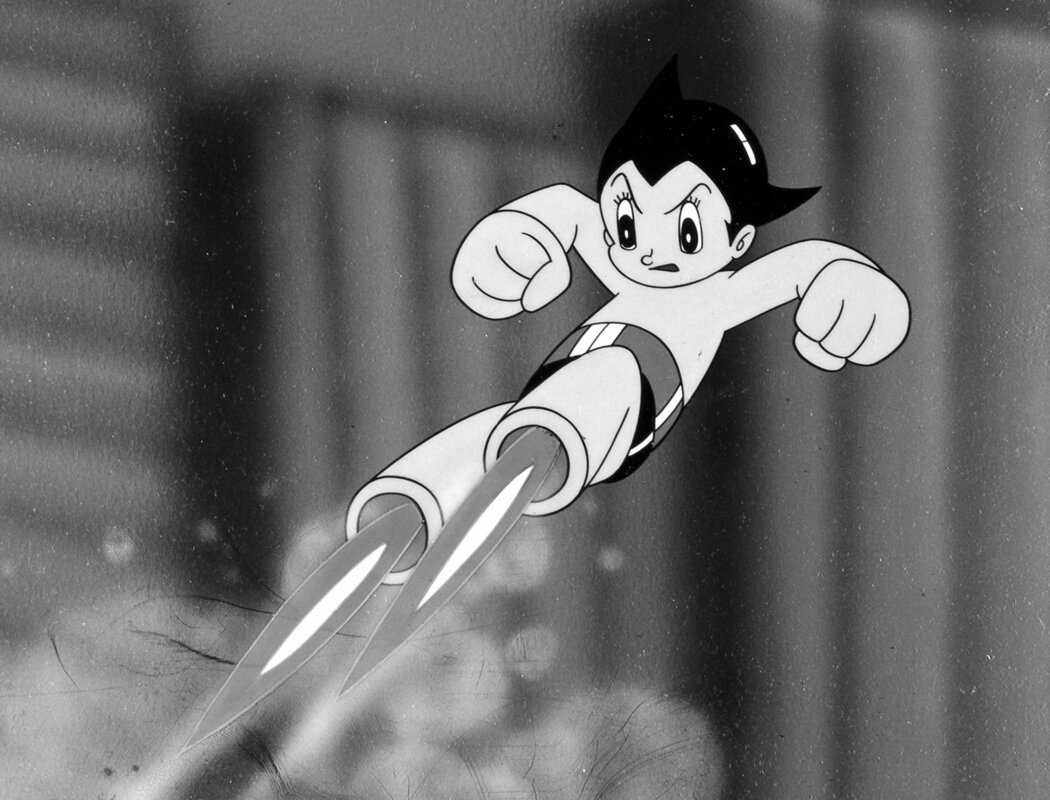
On January 1st, 1963, the first black and white television animation went on the air. The hugely popular genius comic writer Osamu Tezuka took matters into his own hands, establishing Mushi Productions, an animation studio. With the groundbreaking TV animation "Astroboy" he opened history's curtain. Tezuka set animation production costs cheap because he was desperate to do TV animation. This has created a harsh working environment for successive on-site animators, and such a grossly underpaid work environment has not yet been corrected. However, you could also say that this low budget production system supported animation's development so that today it has advanced as a culture that has competitive power in the world animation market.
Once Mushi Production charged into TV animation, the long-established theater animation production studio Toei Douga (the present Toei Animation), also jumped aboard. They began producing pieces by delving into the original concepts of Hanna-Barbera, the famous American television animation team known for "Tom and Jerry" and "The Wacky Races". Toei Douga's first TV animation "Space Patrol Hopper", was a complete takeoff of Hanna-Barbera's "Space Family Robinson". This is also evident in the later-produced "Hustle Punch"; a slapstick animation with characters designed by Yasuji Mori. Since then, Mushi Production and Toei Animation have become the two major players in Japan's animation scene, having a major influence even now as the genesis of Japanese animation.
From the 80's onward, character culture developed further in the Japanese cutting-edge realm of the television game. Popular characters such as "Super Mario Brothers", "Sonic the Hedgehog" and "Dragon Quest" emerged as "dot image" graphics moving inside the games eventually evolving enough to be able to "portray" characters. Later, through renewal of game technology and improvements in game hardware infrastructure, more realistic characters reappeared on the screens. With the GameBoy kids could always carry with them and its representative game "Pocket Monster", the characters started achieving a quality so people could emotionally connect with them. Disregarding "Pocket Monster's" global saturation in the late 90's, the characters roaming around inside the games have completely turned into the pronouns of Japanese character culture.
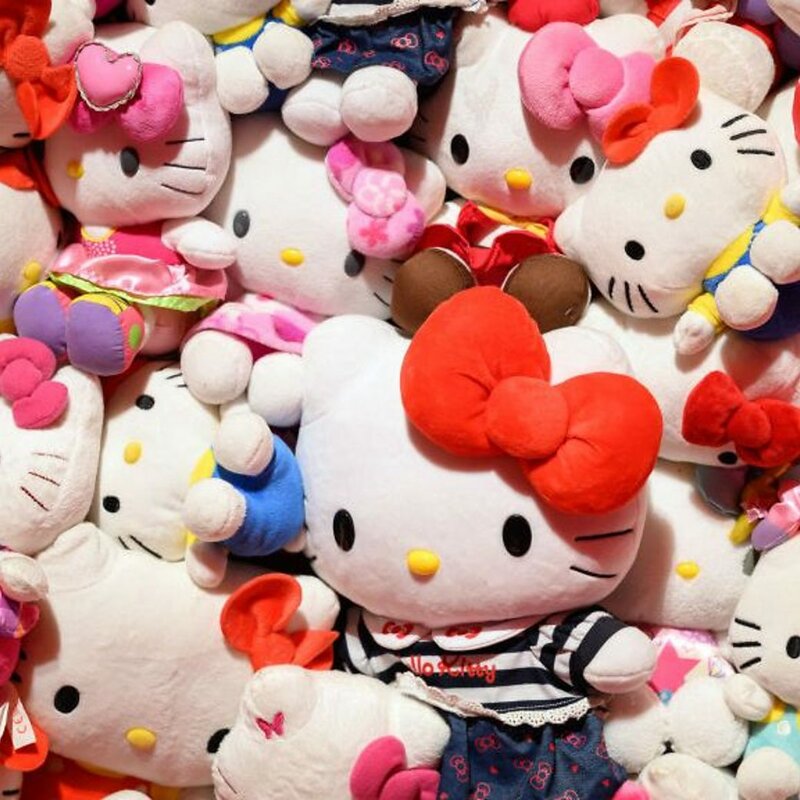
"Hello Kitty's uniqueness exists within denial of any specific stories, the character is itself"
Furthermore the unique character business like Sanrio's "Hello Kitty" has started to grow in Japan. The "Hello Kitty" character is "created purely for merchandise purposes" with no roots in animation or picture books. In the beginning its worldview closely resembled Dick Bruna's "Miffy", and appeared to be riding on the latter's coattails. However, even if picture books are published or animations are produced, "Hello Kitty's" uniqueness exists within denial of any specific stories, the character is itself. Sanrio expansive merchandise production IS the life of "Hello Kitty". "Hello Kitty's" success led to the breakout of companies producing characters such as "TarePanda", "Kogepan" and "Sushi Azarashi" with no links to original comics or merchandise promotion but rather as complete independent businesses. Those artificially created characters by such makers first test the characters popularity and give life to only those who survive the screening, which is a reverse method of traditional character development.
At the apex of the character era, Japan is now known as a "character superpower." Various characters are bustling everywhere. Whether walking the street, watching TV or checking out a cellular phone idling screen, Japan is awash with characters. Cellular phones are adorned with character wallpaper, straps and stickers. Character prize giveaways sits on work desks while a huge number of various sized stuffed characters are displayed at home. According to the BANDAI Character Research Lab, 84% of the Japanese population own some form of character merchandise. Even among senior citizens the rate is as high as 65%. The order or place of the character's emergence continues to change in each case.
Presently the most happening place of birth for the character as a new movement is on the Internet in the form of "ASCII art" (emoticon). AA (ASCII art) originally indicated images literally created with ASCII (single-byte) characters. The origin goes back to America 20 years ago where the set of characters ":-)" was used as a smiley mark. "ASCII art" is "emoticon" created with combinations of symbols and characters that emerged from the saturated Internet and e-mail culture. Initially, treated as "a casual emotional expression" attached to the end of sentences, many complex structures have begun to appear lately. Especially well-known in Japan, are the popular characters "Mona" and "Giko Cat" which appear on the giant discussion board called "2channel" a website based on rumors and hot gossip. Although "Mona" and "Giko Cat" are "ASCII art", their special thread stands out on the discussion board, several different versions are invented daily and even many related home pages have been created.
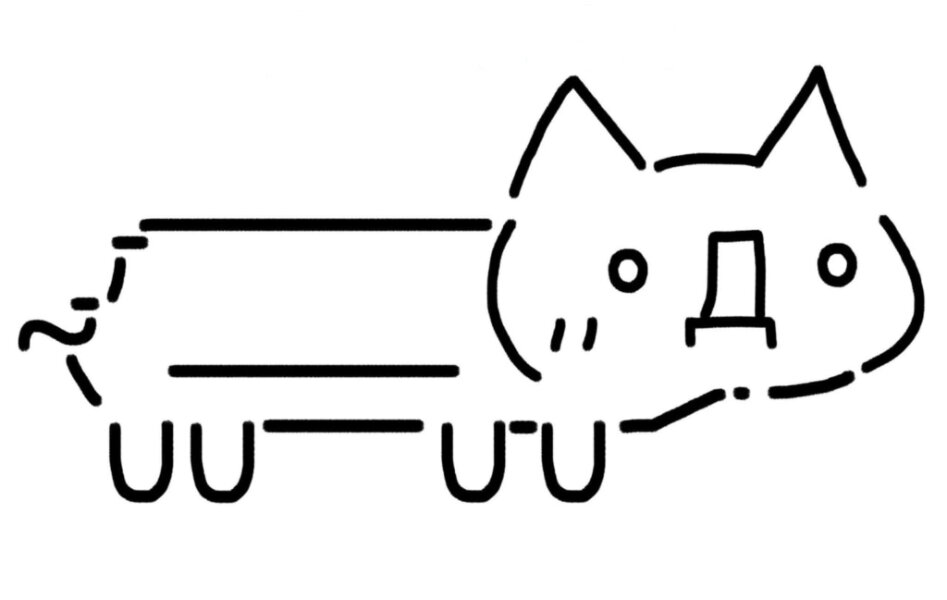
The position of "Mona" and "Giko Cat" have distinct differences from the characters for animation-line merchandise as a premise or those that came out in the world for pure business purposes such as "Hello Kitty" as mentioned earlier. That is, they do not have merchandising as a premise but are born as free expression symbols and live in the area untouchable by marketing. The "2channel" character "Giko Cat" episode reiterates this stance. In this incident, "Giko Cat" was nearly registered as a trademark by a toy manufacturer "TAKARA Co., Ltd.."
While searching the Patent Office home page for "Giko Cat" at 18:00 on June 2nd, 2002, a 2channel user discovered that TAKARA Co., Ltd. had registered this character as a trademark in March of the same year and reported it on 2channel's "News Flash Board" (http://news4.2ch.net/news/). The information debut on 2channel quickly spread to other bulletins such as the "Mona board", triggering especially strong reactions in people who expressed concern, anger and sadness about "Giko Cat" becoming commercialized by TAKARA. So 2channel's massive BBS joined in, showing the image of Giko Cat chained by TAKARA on its top page. Net users rebelled hard establishing websites to "protest against TAKARA" on free web spaces online. Voices criticizing TAKARA went on and on. TAKARA, feeling a sense of crisis over the situation, swiftly issued a statement of apology to the 2channel users and withdrew the trademark application at 16:00 on the 3rd, just one day after the uproar.
TAKARA explained the situation leading up to the trademark application as such: "Giko Cat" wasn't copyrighted so we considered merchandising it upon trademark registration." However when the trademark application was exposed on June 2nd, a "considerable" (quote by said corporation) amount of protest mail surged in so they figured out that "even though the trademark registration held no legal problems, as a realistic issue, commercialization would be difficult due to overwhelming criticism." They withdrew the application because "it was imprudent."
Information once it appears on the net is capable for limitless "infinite proliferation" functioning as characters that anyone can easily enjoy on the desktop or on the net with a quick copy & paste. With the will of leaving the character copyright holder borderline concept vague, the characters secure the freedom to stay unbound earning the broadness.
As a symbol of AA, "Mona" and "Giko Cat's" presence is showing one of the answers for the birth of characters and its way of living in the present progressive form, having been born in Japan where character procreation has gone all the way.
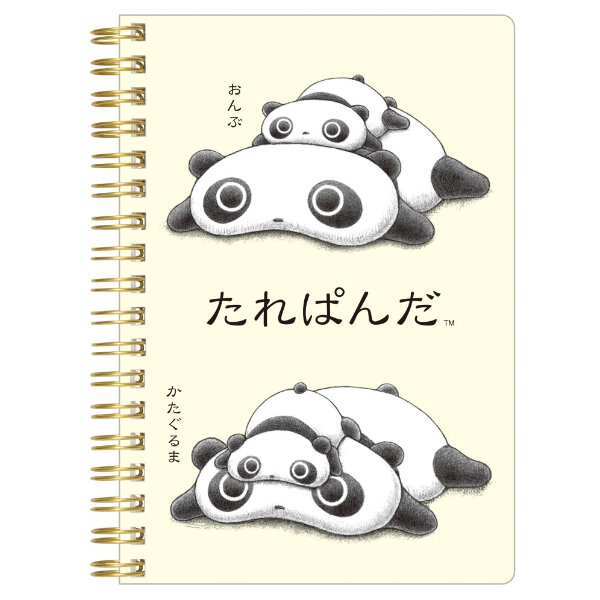
At the opposite end of the spectrum copyright terms were extended and amended for an extremely well known American character icon under the Copyright Term Extension Act. This obsession toward business based on "copyright", and going to such lengths to claim it, reaches the national level only in America that considers the information industry its main power. The aforementioned "Giko Cat" case and prolonged copyright awarded to "the well known icon" in question is a mirror image. "What are the characters rights?" The search in the name of copyright for the closer connection point to society will occur more and more.
"I believe that characters will continue to repeatedly transform in the future, creating areas where new characters can live."
The major roles of the Japanese characters I have introduced, whether it is "Pokemon" or "Giko Cat", after all, play the role as "communication tools." To accelerate the previously mentioned "TarePanda" boom, the media so incessantly drove home the "efficacy" point as a "healing product" that it drew attention as a communication mediator from children to businessmen beyond generations. Meanwhile, looking overseas, Sanrio's "Hello Kitty" is bigger in America than in Japan, its country of origin. This makes sense as well. America's recent racial shift with Latinos outnumbering African-Americans and an increasing Asian population indicates the background for accepting animation more. A minority in the early 90's when the Japanimation boom began, they are now close to becoming a majority. As communication tools moving beyond race, animation and characters are meeting their potential. Transcending a communication gap Japanese can't possibly imagine, the common language developed by the "communication weak" Japanese is becoming useful. I believe that characters will continue to repeatedly transform in the future, creating areas where new characters can live.
Text by Takashi Murakami for Pictoplasma
Translated by AYA
Originally published in Pictoplasma 1, 2001





